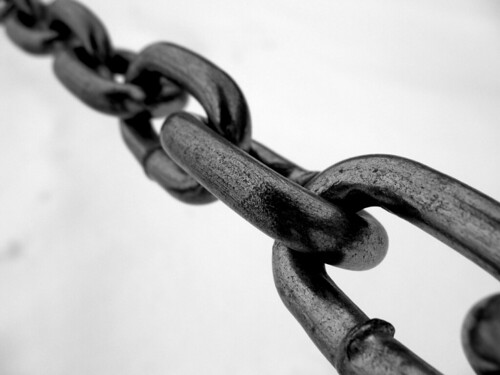3 min read
ERP Consultant Review: Supply Chain Management’s Wicked Inventory Problem
Dean Auenson Fri, Jan 10, 2014

 As an ERP consultant working to support clients with Supply Chain Management challenges, we often find our clients believe inventory optimization is a “wicked problem”. A wicked problem can be managed, but never really solved. In a previous blog I wrote “Supply Chain Management: Time to Manage This Not So Wicked Problem” and I emphasized that if you can find a way to do something better, faster and cheaper then it’s a home run. I discussed optimizing the front end of the supply chain utilizing product lifecycle development methods that are already “baked in” to your ERP solution. These are methods that will yield impressive savings and performance improvements.
As an ERP consultant working to support clients with Supply Chain Management challenges, we often find our clients believe inventory optimization is a “wicked problem”. A wicked problem can be managed, but never really solved. In a previous blog I wrote “Supply Chain Management: Time to Manage This Not So Wicked Problem” and I emphasized that if you can find a way to do something better, faster and cheaper then it’s a home run. I discussed optimizing the front end of the supply chain utilizing product lifecycle development methods that are already “baked in” to your ERP solution. These are methods that will yield impressive savings and performance improvements.
Continuing on that theme, here are some thoughts about inventory optimization within the supply chain.
The Aberdeen Group summarizes this with 3 simple rules:
- Rule 1: Always have enough.
- Rule 2: Never have too much.
- Rule 3: Never let Rule 2 overrule Rule 1.
Consider that the CFO views inventory as evil; inventory carrying costs need to be minimized. The VP of Sales sees inventory as holy; customer service levels cannot be compromised nor is an increase in cost of goods sold acceptable (which eventually conflicts with market demands for competitive pricing). Always have enough but never have too much. Makes sense.
Often times companies view inventory optimization as managing the availability of finished goods to supply demand. This is a shallow approach. It does not consider the end to end inventory implications of the supply chain. This is referred to as a single level approach.
By taking a multi-level or multi-echelon view to supply chain management you will achieve a holistic approach to inventory optimization. This includes harmonizing raw materials, semi-finished goods, materials in transit and finished goods inventory to insure all are in balance, at the right place at the right time at the lowest possible cost.
Better – Faster – Cheaper.
Is this an easy objective? Hardly. Is this a wicked problem? No. It’s solvable.
Today’s contemporary ERP solutions, in combination with industry best practices for manufacturing and supply chain optimization, will make your supply chain sing. By engaging and enforcing multi-level inventory management, best of breed companies tune and monitor their supply chains to be incredibly efficient and responsive to change. The multi-echelon methodology reveals that demand at the front end of the supply chain (inbound) is generally significantly different from demand at the back end of the supply chain (outbound). By focusing only on the back end (finished goods), companies inadvertently create inefficiencies throughout the beginning-to-end supply chain.
Our client implemented a multi-echelon approach to supply chain management. Here are the details and results:
This US client had a nagging problem within their supply chain. They received many of their semi-finished components from their parent company in Europe and other contract manufacturers offshore in Japan. Their ERP solution drove the supply chain using demand calculations based on a single-level approach. In this case the calculations were based on purchasing high minimum order quantities which had long lead times for delivery. Finished goods production was driven by what could be made based on the available components. Pretty much the opposite of lean best practices.
Semi-finished component inventory ballooned as did finished good inventory. Out-of-stock conditions occurred too frequently for both components and finished goods. Hardly the “always have enough but never have too much” ideal.
By breaking the requirements into “chunks” using multi-echelon methodology each step of the supply chain became much more balanced and efficient. The ERP system enabled collaboration between the stakeholders in sales/forecasting, logistics, production and procurement. It became a true Sales and Operations Planning process (S&OP) that tuned the supply chain. Not only did inventory carrying costs go down and out of stock conditions improve, actual margins improved for both the client and their suppliers. Purchasing was able to commit to purchase contracts from the suppliers thereby reducing the order quantities without sacrificing cost. True “available to promise” capability became a reality to insure orders were shipped complete and on time.. Production costs were reduced as production orders were easily scheduled based on customer demand, not component availability.
- Reduced annualized average value of perpetual inventory (finished goods and WIP): -4%
- Out of stock reduction (finished goods): From 4% to 2.4%
- Out of stock reduction (semi-finished goods): From 3.1% to 1.8%
- Net result, lower inventory carrying costs with improved customer service (fewer incomplete orders). Both the CFO and the Sales VP were happy!!!
Here’s the point: The technology is already there. You might already own it. Your ERP solution in conjunction with enforced lean best practices will bring your company into the best of breed category. Perhaps you simply need to employ the resources. Are you overlooking the obvious? Is it time for you to apply these principles within your company?
If you would like more information on this subject or have questions about ERP solutions, please contact me at MIS Consulting & Sales, Inc. 503-614-1919 and ask for Dean Auenson.
You can access a detailed white paper on this subject of the challenges of Supply Chain Management and Inventory Optimization from the Aberdeen Group .
The original version of this article was posted by MIS Consulting & Sales, Inc. here: Supply Chain Management: Inventory Optimization is not a Wicked Problem
Author: Dean Auenson

ERP Consultant Reviews: Getting the Best ERP Advice
As ERP consultants, it is our mission to keep up with available ERP solutions so we can help our clients find the best fit for their unique business...

ERP Consultant Reviews 5 Ways WMS Software Helps Warehouse Operations
As ERP Consultants, we see there are 5 major benefits that our customers experience when automating their warehouse operations with warehouse...

